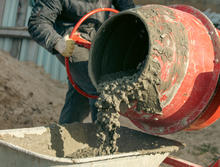Primary Focus Areas

Chemical Metrology
In partnership with U.S. industry, other government agencies, and other scientific institutions, the Chemical Sciences Division performs fundamental and applied research to advance and create state-of-the-art measurement capabilities, theory and computational methods for quantitative measurements and sensing of solids, liquids, gases, plasmas, transient species, and multicomponent matrices. These efforts are focused on understanding the basic principles and science that support the identification and quantification of chemical species.

Data
The Chemical Sciences Division measures and critically evaluates reference data for a wide variety of chemical and physical properties relevant to industry, government agencies, and research institutions. CSD develops and applies theory to simulate complex systems and generate standard reference simulation data, and establishes the accuracy of computational methods by compiling comparisons to measured values and generating standard reference simulation data.

Environment and Climate
The Chemical Sciences Division produces Standard Reference Materials® and Standard Reference Data, develops chemical informatic tools, and generates highly accurate optical measurements for the calibration of sensors used in measuring aerosols and greenhouse gases, of critical importance to the study of climate change. In collaboration with other governmental agencies, NIST develops SRMs for the determination of inorganic and organic contaminants in environmental matrices such as sediments/soils, marine and animal tissues, air particulate, and botanical materials. These SRMs are used worldwide as the basis for validating method accuracy and comparability within the global environmental community.

Food
Well-characterized food-matrix reference materials are needed by testing laboratories in the food industry to facilitate compliance with labeling and safety regulations, which in turn allows consumers to make informed food choices. Consumer confidence and safety depend on sophisticated analysis and underlying metrology to detect both intentional and unintentional adulteration and to confirm the identity of food products. Efforts are ongoing to develop and maintain measurement services, including reference materials, reference data, interlaboratory comparisons, and measurement science research to support compliance with food labeling and food safety regulations.

Forensic Science
NIST provides tools to help forensic crime laboratories validate their analytical methods and ensure accuracy in their results for DNA and biological evidence, fingerprint and pattern evidence, illicit drugs, digital evidence, ballistics, and trace evidence. NIST generates reference materials, reference data, analytical methods, and documentation to support forensic scientist in the laboratory and courtroom. The Chemical Science Division currently has forensic project areas in Cannabis (hemp and marijuana), Novel Psychoactive Substances, Explosives, and Blood Alcohol Testing.

Human Health
The accuracy of clinical diagnostic measurements is essential for reliable diagnosis and cost-effective treatment of disease. NIST works closely with the clinical community to identify metrological needs, and provides reference methods, reference materials, and quality assurance programs to support the accuracy of health-related measurements. These reference methods and the associated SRMs provide critical traceability and help improve the reliability of routine clinical measurements.

Infrastructure
NIST produces and maintains more than four hundred manufacturing-related reference materials for the production and processing of metals, ores, cements, petroleum, and related materials. These SRMs serve an invaluable function in support of manufacturing and construction industries. Within the past three years, CSD has been involved in the production and certification of over fifty new manufacturing-related reference materials, to provide continued support to the Nation’s manufacturing infrastructure and to expand this offering in response to changes in manufacturing processes.

Manufacturing
NIST provides measurement tools and standards in support of chemical materials manufacturing to ensure accurate and reproducible measurements of the composition, structure, and properties of advanced materials. These activities facilitate the design, development, manufacture, and sustainable use of advanced materials; optimization of advanced materials processing; and optimization of production, performance, and reliability of components, devices, and systems that incorporate these materials.

